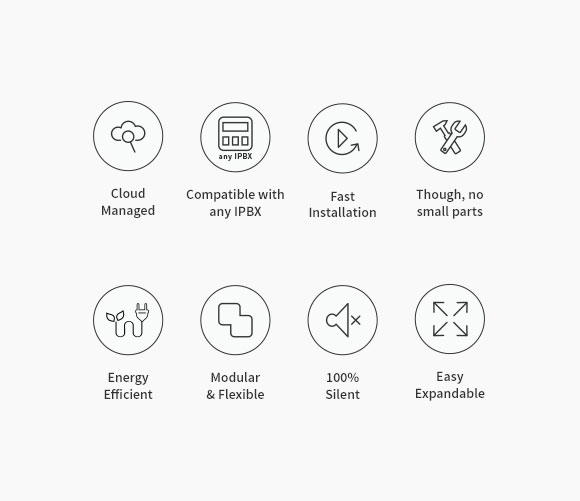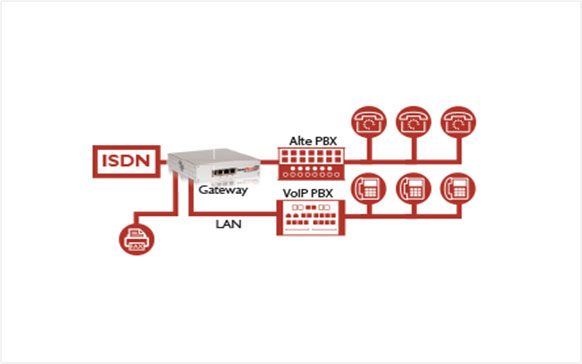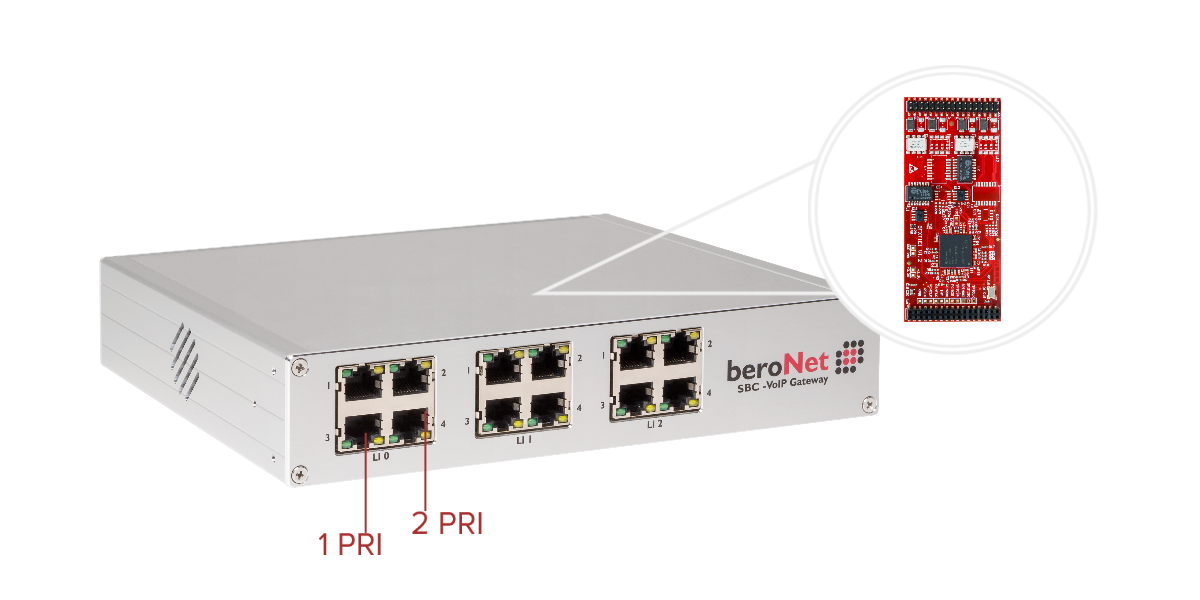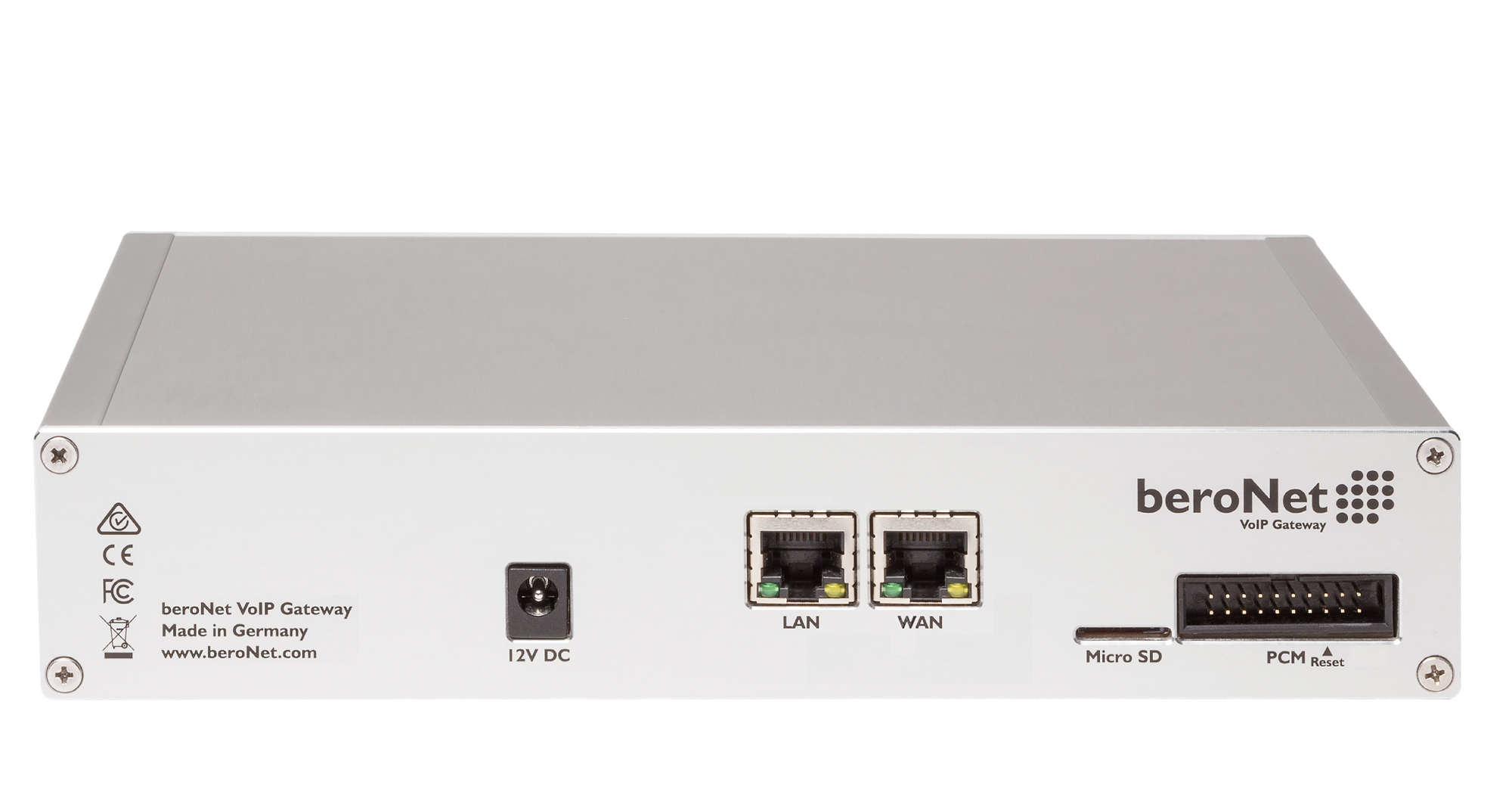beroNet 2 PRI VoIP Gateway
The beroNet 2 PRI SBC VoIP Gateway contains 2 PRI ports, BNSBC-L-2PRI with an integrated E1 module, or BNSBC-L with an additional T1 module. All modules have a high precision clock. Every port can be operated individually in NT (Network Termination) or TE (Terminal Equipment) mode. By adding a virtual CAPI a Fax Server can also be connected. It’s the ideal Gateway to conduct a Soft Migration (Step By Step Migration from classic PBX to VoIP System). The Gateway can be easily updated and remote managed via the beroNet Cloud.

Advantages
Connects SIP with ISDN
ISDN port can be switched in TE or NT mode
Expandable with a supplementary module (PRI, BRI, FXO, FXS)
High Precision Clock
Cloud managed
Cascadable using PCM
19“ rack or wall mountable
High quality Aluminium Housing
Virtual CAPI available
Specifications
- 2 PRI (S2M, E1) ISDN Ports
- Every Port is configurable in NT or TE Mode
- Termination resistors (100 Ohm) per line configurable
- Layer 2 ist Q.921 and Layer 3 is Q.931 (EuroISDN DSS1) compatible
- DSS1 Feature Set: CLIP/No-Screening, CLIR, COLP, UUS, MCID, CD, CNIP AOC-D
- Q.SIG Feature Set: CNIP
- Optional CAPI 2.0 available (Fax, voice)
- Codecs: G.723.1 and Annex A, G.729 a/b, G.726, (up to 16 channels)
- G.711 u/a (up to 64 channels), including echo cancellation
- G.168/G.165 echo cancellation with echo path change detection, up to 128ms
- Voice activity detection / comfort noise generation
- DTMF digit detection and generation
- T.38 Fax Relay (V.27, V.29 and V.17) (up to 16 channels)
- SIP user agent IETF RFC3261 compatible
- SIP via UDP/TCP with optional TLS 1.2 support, SRTP
- “TDM Bridging” of two beroNet devices via PCM Bus
- Power supply: 110-230V, operating 12V DC bei 2 A
- Compliance: CE (EN55022, EN55024, EN60950)
Dimensions and weight
- Dimensions: 218 x 170 x 42 mm
- Weight: 800g
- Mounting: 1U, optional available: 19“ rack brackets, wall-mountable
- Storage temperature: -20° – 70°C
- Operating temperature: 0° – 70°C
- Humidity: 20% – 90%, non-condensing

Soft Migration (VoIP Migration):
Step By Step Migration
Cost savings through integration of the proprietary PBX System
The proprietary PBX System continues to act as a Backup System






